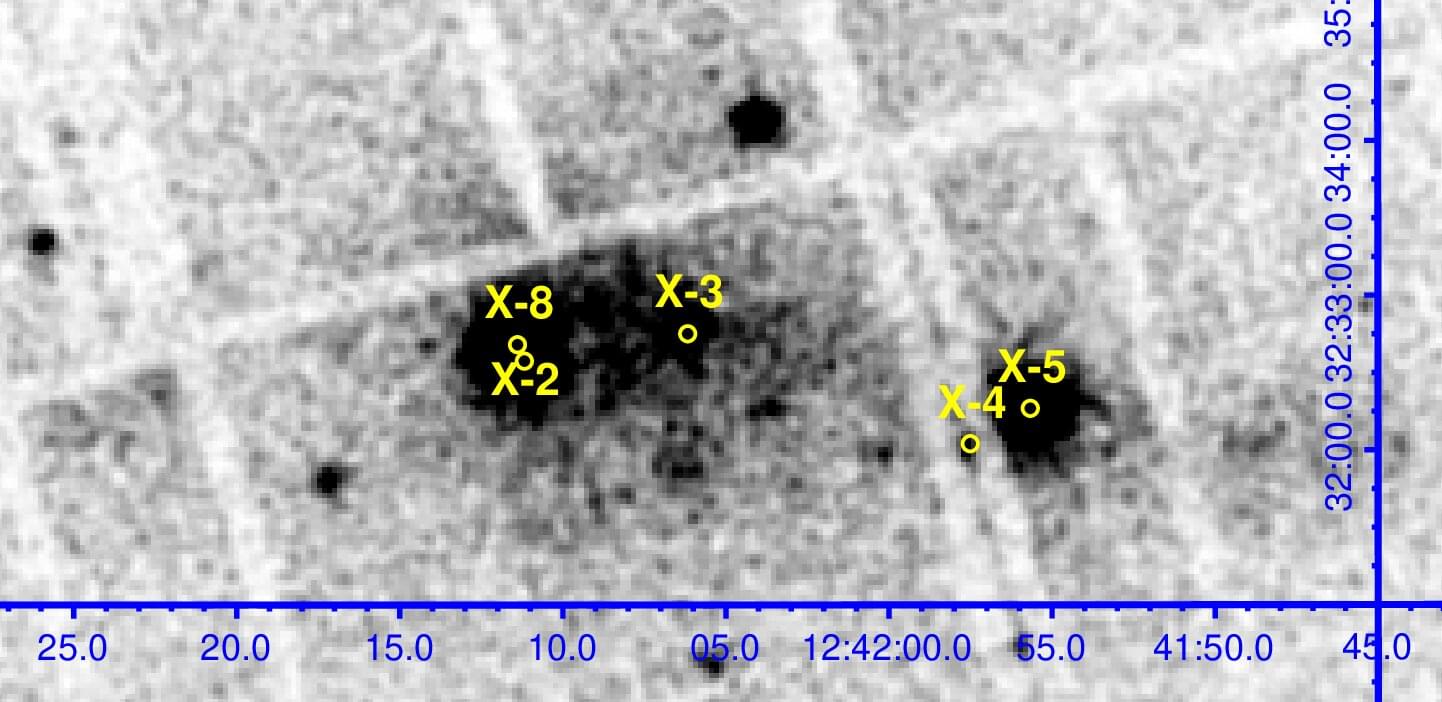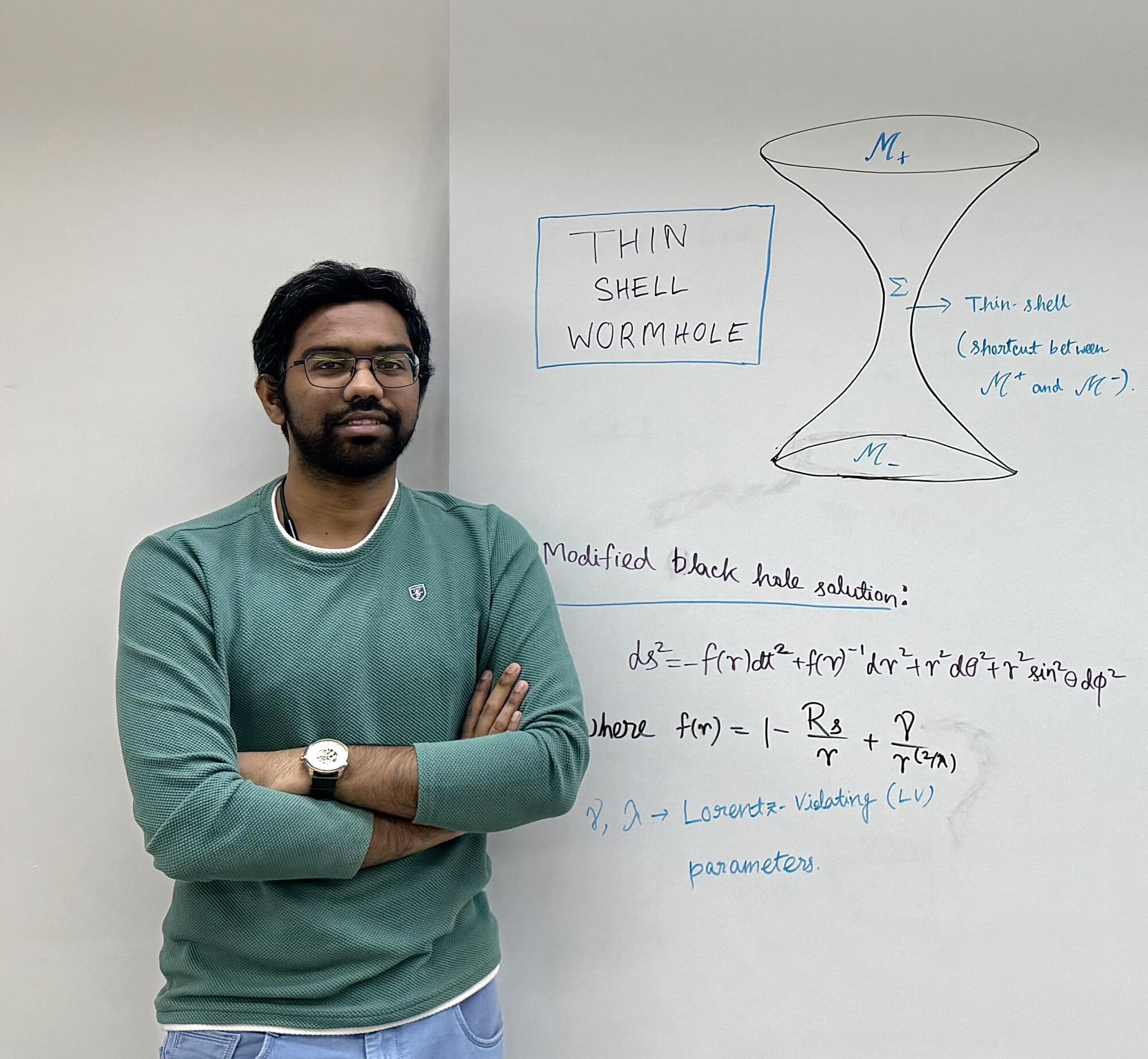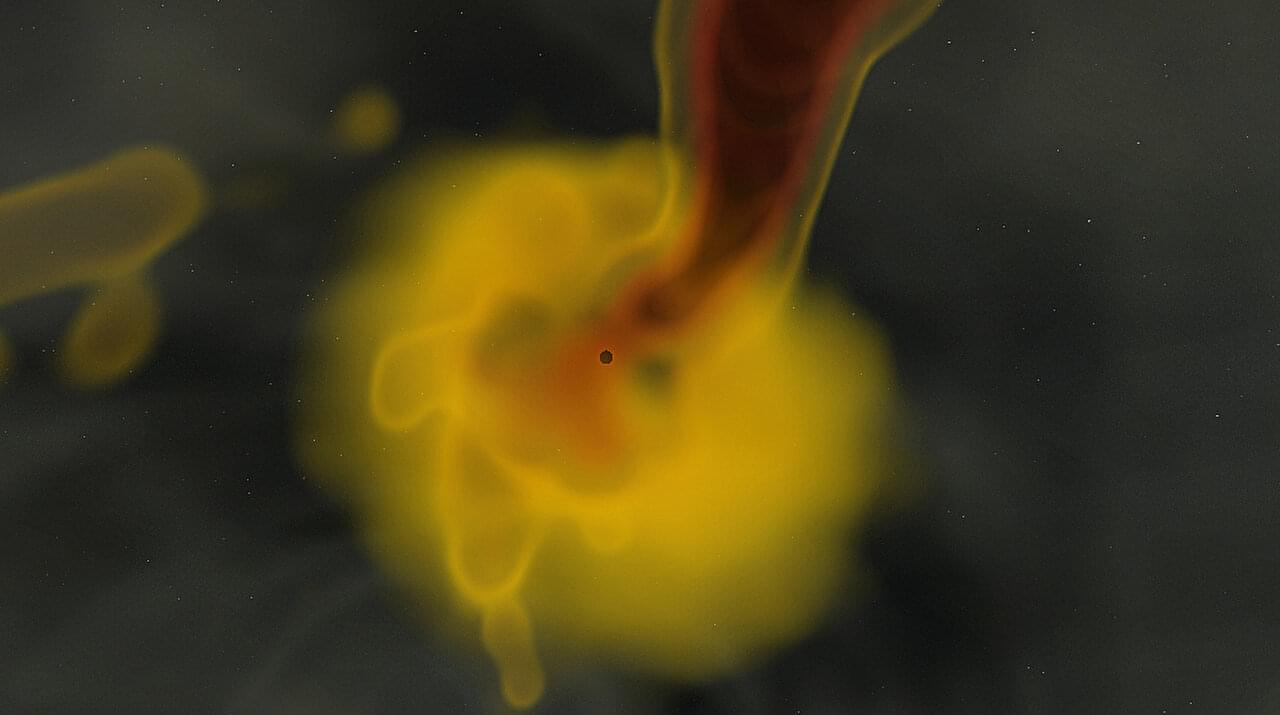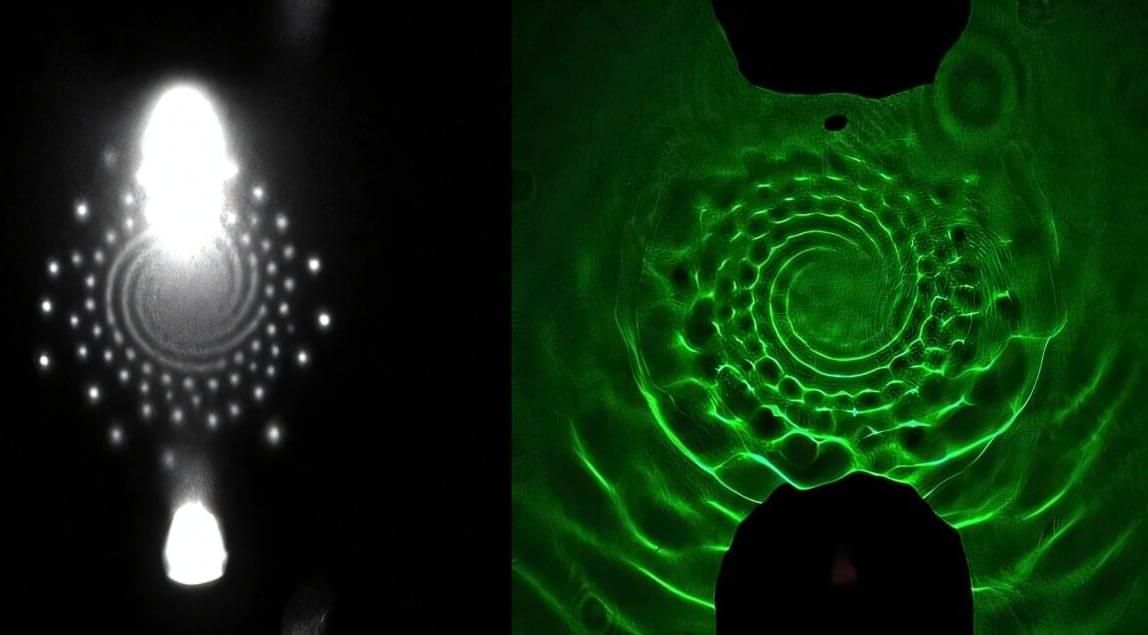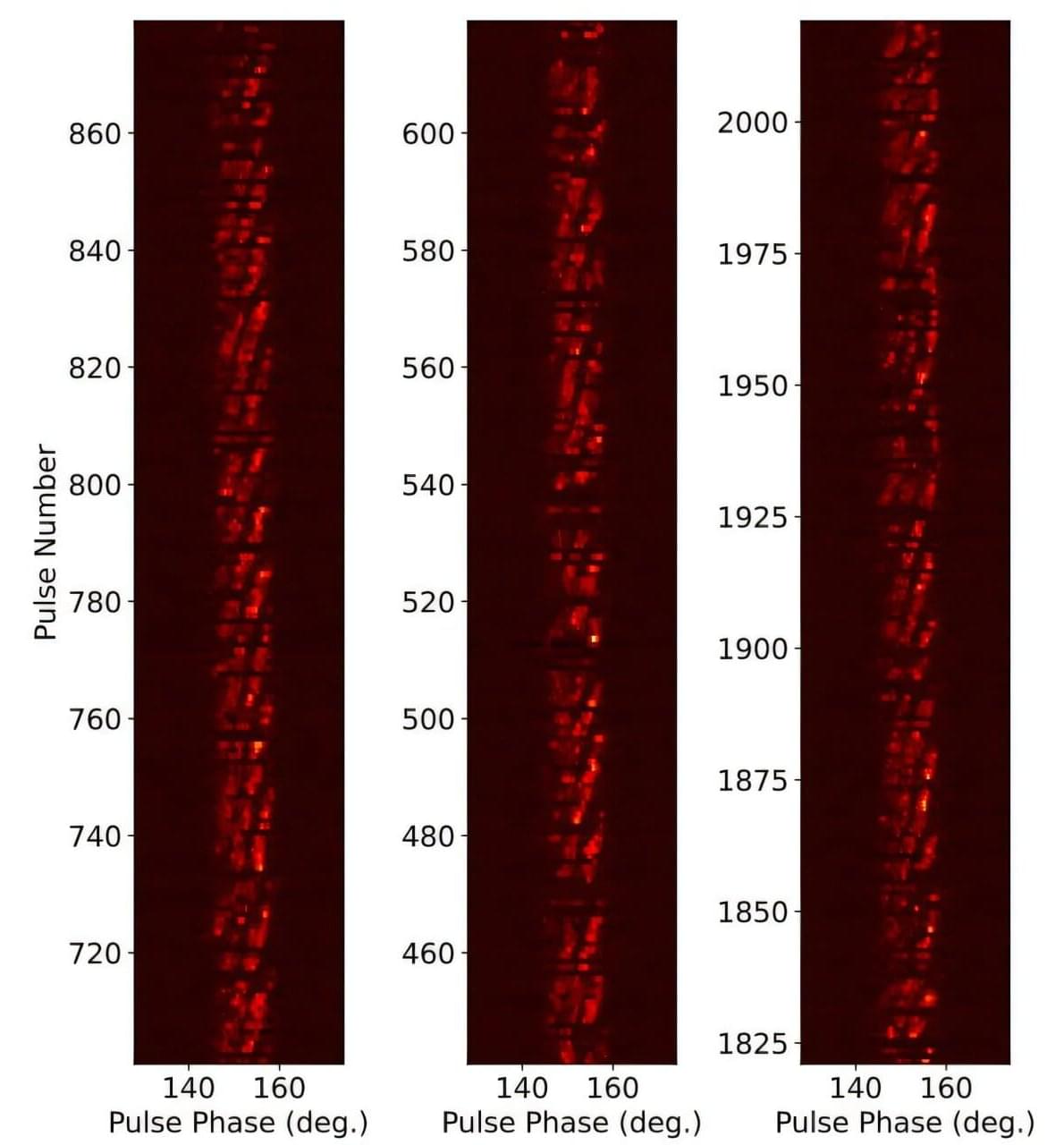Using ESA’s XMM-Newton satellite, European astronomers have observed ultraluminous X-ray sources (ULXs) in the galaxy NGC 4631. As a result, they detected a new pulsating ULX, which received the designation X-8. The research is published November 6 on the arXiv preprint server.
ULXs are point sources in the sky that are so bright in X-rays that each emits more radiation than a million suns emit at all wavelengths. They are less luminous than active galactic nuclei, but more consistently luminous than any known stellar process. Although numerous studies of ULXs have been conducted, the basic nature of these sources still remains unknown.
Some persistent ULXs exhibit pulsations and therefore are categorized as ultraluminous X-ray pulsars (ULXPs). Discovering and studying objects of this type could be crucial for advancing our understanding of accretion physics—for instance, mechanisms that enable the sustained X-ray luminosities of ULXs which exceed the Eddington limit.
